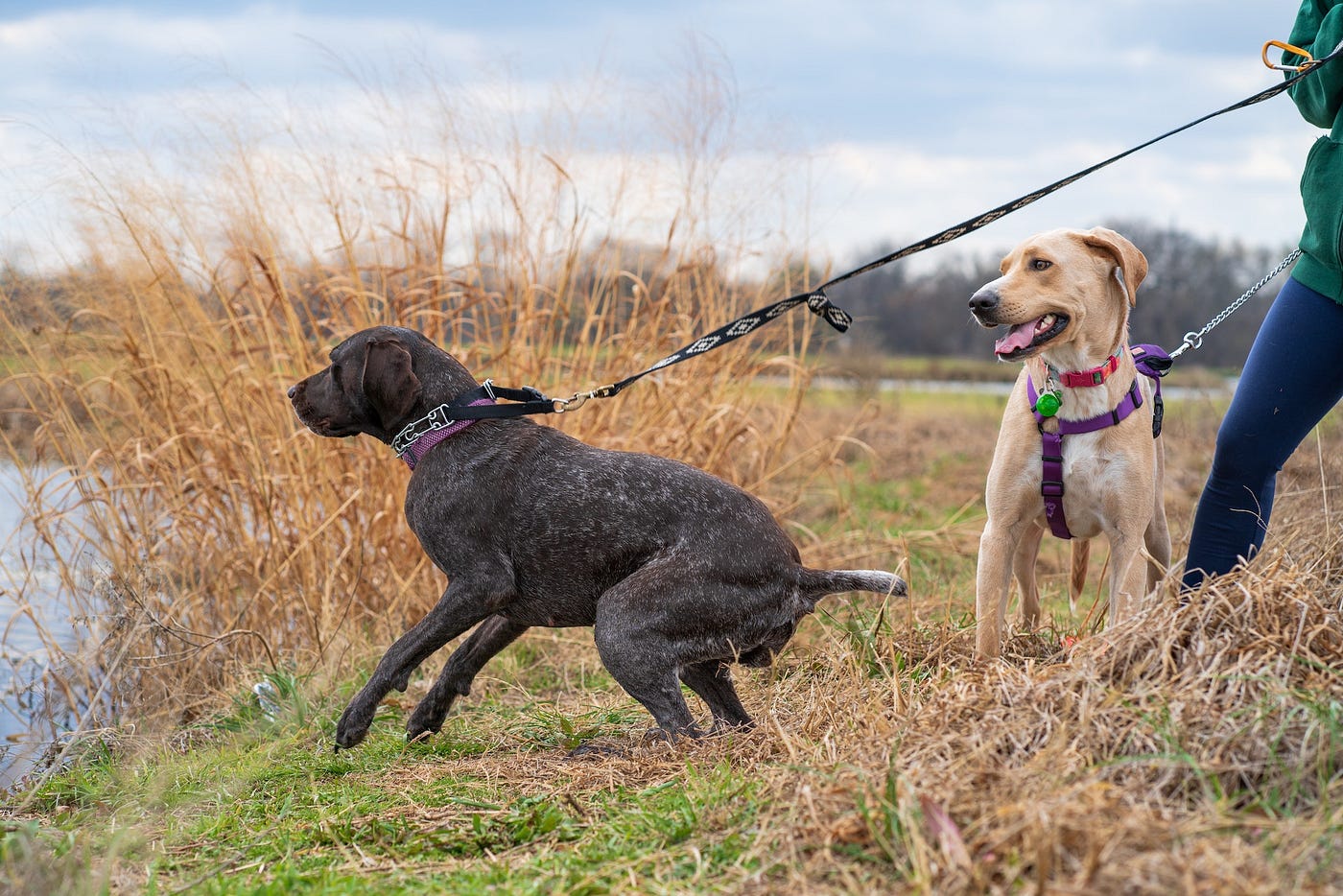Introduction: The Challenge of Leash Tugging
Walking your dog on a leash should be a pleasant experience for both you and your furry companion. However, the reality for many dog owners involves constant tugging and pulling, making walks frustrating and exhausting. In this guide, we’ll explore proven methods to teach your dog to walk on a leash without tugging, allowing you to enjoy peaceful strolls together.
Understanding the Root Causes of Leash Tugging
Identifying Triggers and Motivations
Before addressing leash tugging, it’s essential to understand why dogs engage in this behavior. Whether it’s excitement, fear, or a desire to explore, identifying the root causes of leash tugging will help tailor your training approach to effectively address the underlying motivations behind your dog’s behavior.

Building a Foundation of Trust and Communication
Establishing a Strong Bond with Your Dog
Effective leash training begins with building trust and communication between you and your dog. This section will discuss strategies for strengthening your bond, such as positive reinforcement, consistent commands, and clear boundaries, laying the groundwork for successful leash training without tugging.
Choosing the Right Equipment
Selecting Leashes and Collars Suited to Your Dog’s Needs
The right equipment can make a significant difference in preventing leash tugging. From harnesses to head halters and no-pull collars, this section will explore various options and provide guidance on selecting the most suitable gear for your dog’s size, breed, and behavior.

Introducing Desensitization Techniques
Gradually Acclimating Your Dog to the Leash
For dogs prone to leash tugging, the leash itself can become a source of excitement or anxiety. Introducing desensitization techniques can help your dog become more comfortable with the sensation of wearing a leash, reducing the likelihood of tugging behavior during walks.
Mastering Loose Leash Walking
Teaching Your Dog to Walk Politely by Your Side
The cornerstone of leash training without tugging is mastering loose leash walking. This section will outline step-by-step techniques for teaching your dog to walk calmly by your side, including the use of rewards, attention redirection, and consistent reinforcement of desired behaviors.

Implementing Positive Reinforcement
Rewarding Desired Behaviors and Discouraging Tugging
Positive reinforcement is a powerful tool in leash training, encouraging your dog to repeat desired behaviors while discouraging unwanted ones. This section will discuss effective reward-based strategies for reinforcing loose leash walking and discouraging tugging, ensuring a positive and enjoyable training experience for both you and your dog.
Addressing Challenges and Setbacks
Navigating Obstacles Along the Training Journey
Leash training without tugging may encounter challenges and setbacks along the way. From distractions and environmental triggers to stubborn behavior, this section will provide guidance on overcoming obstacles and staying consistent in your training efforts, ultimately leading to long-term success.
Consistency is Key: Maintaining Training Progress
Ensuring Continued Success Beyond Initial Training Sessions
Consistency is paramount in leash training without tugging. This section emphasizes the importance of ongoing practice, reinforcement, and patience to maintain the progress achieved during initial training sessions. By incorporating leash training into your daily routine and consistently reinforcing desired behaviors, you can ensure that your dog continues to walk politely on the leash without tugging.

Expanding Training Beyond the Basics
Exploring Advanced Techniques for Leash Training Success
Once you’ve mastered the foundational skills of leash walking without tugging, you can explore advanced techniques to further refine your dog’s behavior and enhance your walking experience. This section will delve into advanced training methods, such as distance commands, off-leash training, and navigating challenging environments, to ensure that your dog remains attentive and obedient in any situation.
Utilizing Environmental Enrichment
Incorporating Mental Stimulation into Walks
In addition to physical exercise, mental stimulation is vital for keeping your dog engaged and focused during walks. This section will discuss ways to incorporate environmental enrichment into your walks, such as incorporating interactive games, scent work, and obedience challenges, to keep your dog mentally stimulated and prevent boredom-induced behaviors like tugging.
Understanding Your Dog’s Energy Levels
Tailoring Training to Suit Your Dog’s Needs
Every dog has different energy levels and exercise requirements. Understanding your dog’s individual needs will allow you to tailor your training approach accordingly. This section will explore strategies for managing your dog’s energy levels, including adjusting the duration and intensity of walks, incorporating rest breaks, and providing appropriate outlets for physical and mental stimulation.

Recognizing Signs of Stress and Anxiety
Promoting a Calm and Relaxed Walking Experience
Stress and anxiety can manifest in various ways during walks, potentially leading to leash tugging and other undesirable behaviors. This section will help you recognize signs of stress and anxiety in your dog, such as panting, pacing, or avoidance behaviors, and provide techniques for promoting a calm and relaxed walking experience through gradual desensitization and positive reinforcement.
Seeking Professional Guidance
Consulting with Trainers and Behaviorists for Additional Support
If you encounter persistent challenges or behavioral issues during leash training, don’t hesitate to seek professional guidance. Certified trainers and behaviorists can provide personalized advice and support to address specific concerns and develop tailored training plans that meet your dog’s unique needs. This section will discuss the benefits of consulting with professionals and provide tips for finding reputable trainers in your area.
Maintaining a Positive Attitude
Staying Motivated and Patient Throughout the Training Process
Leash training without tugging requires patience, consistency, and a positive attitude. Even on challenging days, maintaining a optimistic mindset will help keep you motivated and focused on the long-term goals of your training efforts. This section will provide strategies for staying positive and resilient, even in the face of setbacks, to ensure continued progress and success in leash walking with your dog.
Conclusion: Enjoying Stress-Free Walks with Your Dog
By implementing proven methods and techniques, you can teach your dog to walk on a leash without tugging, transforming walks into enjoyable and stress-free experiences for both you and your furry companion. With patience, consistency, and a commitment to positive reinforcement, you can cultivate a harmonious walking relationship that strengthens the bond between you and your dog for years to come.










